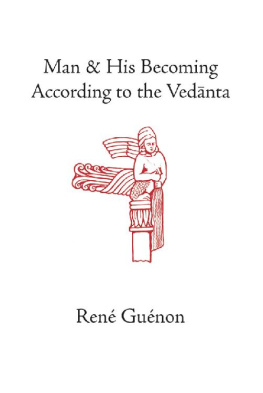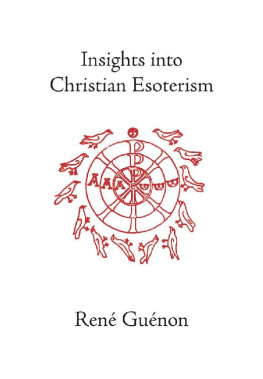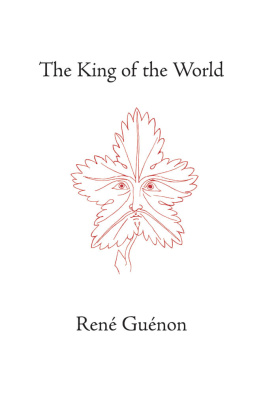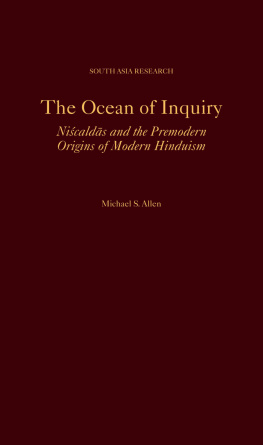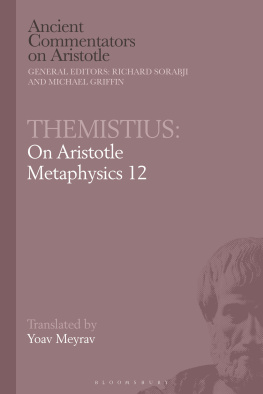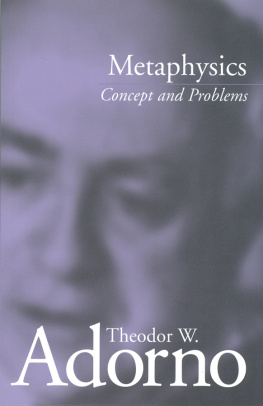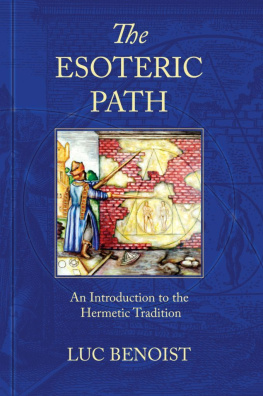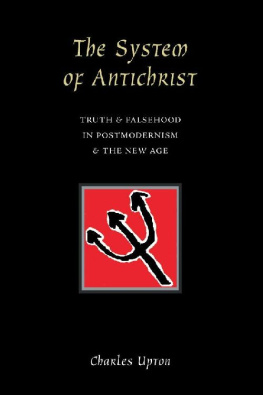COLLECTED WORKS OF REN GUNON
MAN AND HIS BECOMING
ACCORDING TO THE VEDNTA
REN GUNON
MAN AND HIS
BECOMING
ACCORDING TO
THE VEDNTA
Translator
Richard C. Nicholson
SOPHIA PERENNIS
HILLSDALE NY
Originally published in French in as
LHomme et son devenir selon le Vednta
Les ditions Traditionnelles 1925
Third, revised edition, 2001
Second Impression 2004
Second edition, 1945, Luzac & Company, London
First edition 1928, Rider & Co., London
English translation Sophia Perennis 2001
All rights reserved
Series editor: James R. Wetmore
No part of this book may be reproduced or transmitted,
in any form or by any means, without permission
For information, address:
Sophia Perennis, P.O. Box 611
Hillsdale NY 12529
sophiaperennis.com
Library of Congress Cataloging-in-Publication Data
Gunon, Ren
[Lhomme et son devenir selon le Vednta. English]
Man and his becoming according to the Vednta / Ren Gunon ;
translated by Richard C. Nicholson.3rd rev. ed.
p. cm. (Collected works of Ren Gunon)
Includes indexes.
ISBN 0 900588 61 6 (pbk: alk. paper)
ISBN 0 900588 62 4 (cloth: alk. paper)
1. Vednta. 2. Man (Hinduism) I. Nicholson, Richard C. II. Title.
B132.V3 G7813 2001
128.0954dc2001000974
CONTENTS
EDITORIAL NOTE
THE PAST CENTURY HAS WITNESSED an erosion of earlier cultural values as well as a blurring of the distinctive characteristics of the worlds traditional civilizations, giving rise to philosophic and moral relativism, multiculturalism, and dangerous fundamentalist reactions. As early as the 1920s, the French metaphysician Ren Gunon (18861951) had diagnosed these tendencies and presented what he believed to be the only possible reconciliation of the legitimate, although apparently conflicting, demands of outward religious forms, exoterisms, with their essential core, esoterism. His works are characterized by a foundational critique of the modern world coupled with a call for intellectual reform; a renewed examination of meta-physics, the traditional sciences, and symbolism, with special reference to the ultimate unanimity of all spiritual traditions; and finally, a call to the work of spiritual realization. Despite their wide influence, translation of Gunons works into English has so far been piecemeal. The Sophia Perennis edition is intended to fill the urgent need to present them in a more authoritative and systematic form. A complete list of Gunons works, given in the order of their original publication in French, follows this note.
Gunon published his fundamental doctrinal work, Man and His Becoming according to the Vednta, in 1925. After asserting that the Vednta represents the purest metaphysics in Hindu doctrine, he acknowledges the impossibility of ever expounding it exhaustively and states that the specific object of his study will be the nature and constitution of the human being. Nonetheless, taking the human being as point of departure, he goes on to outline the fundamental principles of all traditional metaphysics. He leads the reader gradually to the doctrine of the Supreme Identity and its logical corollarythe possibility that the being in the human state might in this very life attain liberation, the unconditioned state where all separateness and risk of reversion to manifested existence ceases. Although Gunon chose the doctrine of the Advaita school (and in particular that of Shankara) as his basis, Man and His Becoming should not be considered exclusively an exposition of this school and of this master. It is, rather, a synthetic account drawing not only upon other orthodox branches of Hinduism, but not infrequently also upon the teachings of other traditional forms. Neither is it a work of erudition in the sense of the orientalists and historians of religion who study doctrines from the outside, but represents knowledge of the traditionally transmitted and effective sacred science. Gunon treats other aspects of Hinduism in his Introduction to the Study of the Hindu Doctrines and Studies in Hinduism.
Gunon often uses words or expressions set off in scare quotes. To avoid clutter, single quotation marks have been used throughout. As for transliterations, Gunon was more concerned with phonetic fidelity than academic usage. The system adopted here reflects the views of scholars familiar both with the languages and Gunons writings. Brackets indicate editorial insertions, or, within citations, Gunons additions. Wherever possible, references have been updated, and English editions substituted.
The present translation is based on the original work of Richard C. Nicholson. The text was checked for accuracy and further revised by James Wetmore, with further reviews by John Ahmed Herlihy and John Champoux. A special debt of thanks goes to Cecil Bethell, who revised and proofread the text at several stages and provided both the general index and the index of Sanskrit terms.
THE WORKS
OF REN GUNON
Introduction to the Study of the Hindu Doctrines (1921)
Theosophy: History of a Pseudo-Religion (1921)
The Spiritist Fallacy (1923)
East and West (1924)
Man and His Becoming according to the Vednta (1925)
The Esoterism of Dante (1925)
The Crisis of the Modern World (1927)
The King of the World (1927)
Spiritual Authority and Temporal Power (1929)
The Symbolism of the Cross (1931)
The Multiple States of the Being (1932)
The Reign of Quantity and the Signs of the Times (1945)
Perspectives on Initiation (1946)
The Great Triad (1946)
The Metaphysical Principles of the Infinitesimal Calculus (1946)
Initiation and Spiritual Realization (1952)
Insights into Christian Esoterism (1954)
Symbols of Sacred Science (1962)
Studies in Freemasonry and the Compagnonnage (1964)
Studies in Hinduism (1966)
Traditional Forms and Cosmic Cycles (1970)
Insights into Islamic Esoterism and Taoism (1973)
Reviews (1973)
Miscellanea (1976)
PREFACE
ON several occasions we have expressed in previous writings the intention of undertaking a series of studies that would aim, according to the needs of the case, either at presenting a direct exposition of various aspects of the Eastern metaphysical doctrines, or at making such adaptations of them as might seem most intelligible and advantageous, while however always remaining strictly faithful to their spirit. The present work constitutes the first of these studies. For reasons which have already been explained elsewhere, we have taken the Hindu doctrines as our central authority, and more especially the teaching of the Vednta which is the most purely meta-physical branch of these doctrines. It should be clearly understood, however, that there is nothing in this procedure to prevent us, as occasion arises, from pointing out analogies and making comparisons with other theories, regardless of their origin; in particular, we shall refer to the teachings of other orthodox branches of the Hindu doctrine insofar as they clarify or complete the teachings of the Vednta on various points. To anyone inclined to raise objections to the adoption of such a method we would reply that such criticism is all the less justifiable in that our intentions are in no wise those of a historian; we wish to re-assert emphatically at this point that our purpose is not erudition but understanding, and that it is the truth of ideas which interests us exclusively. If therefore it has seemed desirable in the present instance to supply precise references, we have done so for reasons quite unconnected with the special preoccupations of orientalists; we simply wished to show that we have invented nothing and that the ideas expounded derive from a genuine traditional source; at the same time, for the sake of those who are able to profit thereby, we have furnished the means of referring to texts containing complementary information, for it goes without saying that we make no claim to put forward an absolutely complete exposition of the doctrine, even regarding a single point.
Next page
